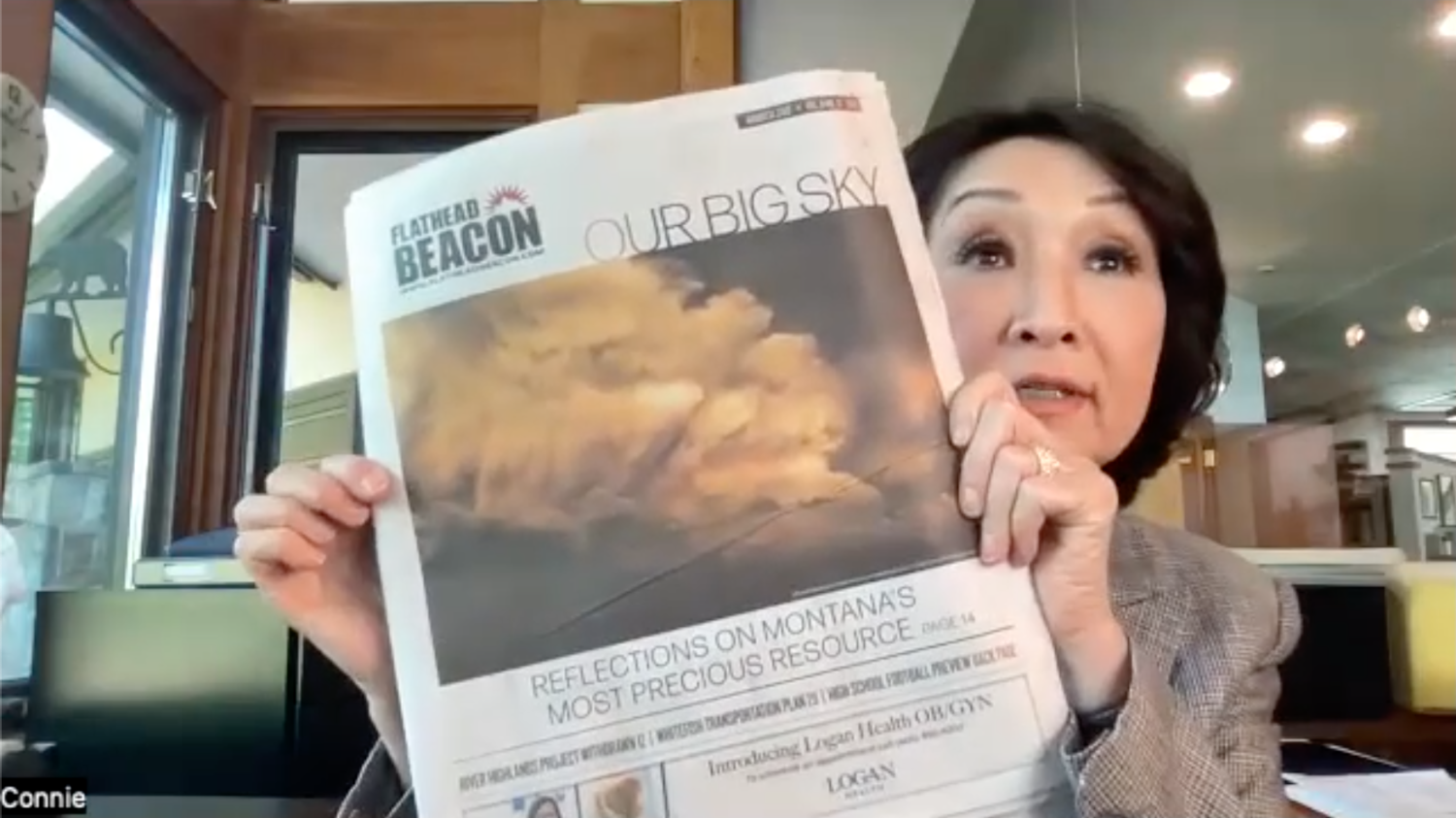Connie Chung was talking about investigative journalism when she abruptly rose from her seat.
“I’ll be right back,” she assured me.
A minute later, she returned to our Zoom call with stacks of the Flathead Beacon, the weekly newspaper in Montana that she runs with her husband, talk show host Maury Povich. Chung’s familiar voice, heard on national television for three decades, read a Beacon headline from August about the resignations of library employees who feared for their safety after books were returned riddled with bullet holes. The story reflected the Beacon’s goal, in her words, “to cover local news the old-fashioned way” — doggedly and without bias.
“I’m so grateful that those who do investigative reporting have not lost their touch,” she said, “and still find out information that no one else does.”
Chung’s multifaceted career in news reflects how my fellow journalism professors can teach the history of investigative reporting and ensure its future. Chung was a trailblazer on CBS, NBC and ABC, only the second woman to anchor an evening newscast for a major network. But in our interview, she expressed the most pride in her investigative work, and the Beacon’s.
Those are the stories that brought us together on Zoom last fall. I am the associate editor for the academic journal American Journalism, which publishes peer-reviewed research by professors and graduate students who study media history. To mark the 50th anniversary of the Watergate break-in last year, I put together a special issue of the journal focused on investigative reporting. The issue, recently published online, demonstrates that this brand of comprehensive, often courageous coverage long predates Woodward and Bernstein. The issue features research such as abolitionists adopting investigative techniques to reveal the horrors of slavery in the 1830s and a columnist uncovering love letters penned by a mistress of General Douglas MacArthur in 1934.
Unlike so much dry academic publishing, these articles are page-turners, full of scenes and quotes collected by former journalists who transitioned to the classroom and know how to hold a reader’s interest.
The issue departs from the conventions of an academic journal in significant ways. As a former reporter myself, once writing for more than half a million readers of the New York Daily News, I wanted the issue to reach a larger and broader audience than a typical academic journal. That meant enlisting journalists themselves.
The issue includes pieces by investigative reporters — from Axios, Capital B, The San Diego Union-Tribune, the Tampa Bay Times, Vice and USA Today — discussing the work that inspires them to keep knocking on doors and submitting public records requests. There are also interviews with household names like former White House counsel John Dean and actress Jane Seymour, who played an investigative reporter in the 1997 television movie “The Absolute Truth.” And since I know the general public is unlikely to stumble upon our journal without some promotion, I am spreading the word through podcasts, satellite radio and this column.
Today, investigative reporting is in peril. At its best, the investigative process operates as it did during Watergate, with reporters, prosecutors, police, government agencies, courts and elected officials uncovering and sharing different bits of evidence. This “investigative ecosystem” produces stories that have historically generated public outrage, indictments and other consequences for wrongdoers. In recent years, though, the ecosystem has declined amid shrinking newsroom budgets and audiences that do not trust the press. With watchdogs neutered, crooks get away with audacious misdeeds. Case in point: A Long Island newspaper reported before the midterm elections about then-congressional candidate George Santos fabricating many of his credentials, but the mainstream press did not follow up until after voters had dispatched him to Washington.
Journalists who grew up in the Watergate era fret about the demise of the gumptious, shoe-leather reporting immortalized in “All the President’s Men.” As we lose investigative stalwarts — most recently CNN’s Drew Griffin, who died last month — there is concern that their kind may never be replaced.
In editing the special issue, though, I found reasons for hope. Those of us who teach the next generation of journalists can introduce them to the inspiring examples of reporting detailed in the issue. When preparing for my interview with Chung, I learned that she examined a cold-case murder for “20/20” that led to the conviction of a former Ku Klux Klan member more than three decades after his crime. Now off the air for two decades, Chung raved about the litany of state journalism awards won by Beacon editor-in-chief Kellyn Brown and managing editor Tristan Scott, whose investigative work has burnished the newspaper’s reputation.
Like Brown and Scott, most of the Beacon staff graduated from the University of Montana in Missoula, two hours south of the newsroom. But Povich also sponsors an intern every year from his alma mater 2,400 miles away, the University of Pennsylvania. Chung praised a recent hire from UPenn who interned at the Beacon and came back full-time, a rare instance of a journalism student from an elite East Coast university trekking to the Mountain West.
“Isn’t that great? A wonderful story?” Chung asked me. “That someone who went to an Ivy League college is coming to Flathead County to work?”
It is. As a professor, I am grateful that the Beacon provides an investigative ecosystem where student journalists can thrive. And as a historian, I am glad the history of investigative reporting isn’t over yet.







